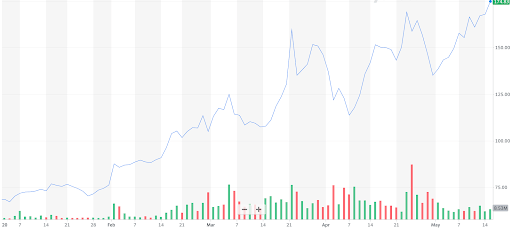Back to the Office – lessons from these pandemic months & what will be incorporated
The recent period between March and May 2020 has already set an unprecedented footprint on the global economy, stress-tested medical care, social interactions and the way we work. The Covid-19 outbreak redefined many taken-for-granted aspects of our lives and basically locked down the world’s population in their homes for weeks. With the new daily cases fortunately now appearing to be in decline, countries have started the process of slowly defrosting their economies and laid down plans on how to come back to business as usual. People and companies all around the world think about coming back to business and ask questions on how the “new-world” will look like in the post-pandemic era. So, what have we actually learned during these pandemic months and how (if so) is it going to affect our lives? Is the virus outbreak going to alter the way we operate permanently or are we going to forget about it in a few months as if as though it never happened?
An interesting social experiment
Unintentionally, the recent pandemic paved the way for an unprecedented social and economic experiment on a global scale. Never before, were so many people asked to stay in their homes and do their work remotely while other industries – such as restaurants, cinemas or even hair salons – were shut down completely. One by one, countries decided to close their borders and restrict public commute to only those deemed as indispensable. Flights between continents and countries were paused until further notice, and strict quarantine restrictions were imposed on anyone returning from foreign travel. Not all countries synchronized on lockdowns, but gradually one after another, they started to enforce country-wide social distancing, eventually forcing citizens to refrain from travelling and wandering around without solid reasons.
Left without any other choice, people had to re-think their daily schedules and adapt to the new environment. Instead of the morning commute to the workplace, grabbing freshly brewed coffee in a cafe, getting takeout at lunchtime, and heading to the gym after work, we now had to figure out how to operate within our homes, 24 hours every day. The challenge was (and in many cases still is) how to reconcile work and private life and keep it separated from each other without the luxury of changing one’s surroundings whenever desired.
Interestingly enough, these past months proved that it is actually possible to lock down a big chunk of the world’s population within their private dwellings, and that the world itself doesn’t stop operating – even without the crowd, the “show must go on” one could say. Some people were afraid and argued that it’s impossible to conduct such a vast quarantine on earth’s population, and that citizens will simply not obey the rules. Predictions for nation-wide riots, local uprisings, and society clashes were not unheard of. In reality though, none of these post-apocalyptic visions materialized so far (at least not to an extreme extent), and the vast majority of people stayed in their homes willingly, and obeyed restrictions enforced by the authorities. Sure, in some places not everyone followed all the rules, but this minority was strongly outweighed by the rest of the population. It was truly interesting to watch people from different cultures, social backgrounds, upbringings, and income levels to jointly follow social distancing rules and stay in their homes. From China, to Italy, Spain, USA to Australia and New Zealand, citizens refrained from public gatherings, meetings with friends and family, or going to restaurants. It turned out that people are actually able to live without shopping malls, cinemas and theatres or restaurants and cafeterias – at least for 2 months.
How the way we work has changed
Recent months’ events have shifted the way employees around the world have been doing their work. Large parts of the world’s population were forced to switch from showing up in their offices Mon-Fri from 9-to-5 to conducting all their responsibilities 100% remotely. Daily, weekly, monthly, and quarterly business meetings were moved from physical conference rooms to the virtual world. So, are there actually any learnings for the future of work from this unintended and unprecedented worldwide experiment?
One thing for sure, it’s become evident that, in fact, people are able to do their business, develop new products, do sales and marketing without leaving their homes and cosy couches. Advances in technology aimed at easing communication and collaboration between remote workers such as Zoom, Slack, MS Teams, GitHub or Dropbox have seen a surge in demand that was never there before. According to one article found in VentureBeat MS Teams reached a whopping 75M DAU (daily active users) in April compared to 44M DAU in March and 20M DAU in November 2019. Zoom, a Nasdaq-listed video conferencing software provider, more than doubled its share price since the beginning of 2020 while reporting a record high of 300M daily meeting participants at the end of April.

Zoom's share price since Jan-2020
It also seems like the other current challenge facing us – the world-wide economic recession – has kept clear of technology giants like Google, Amazon or Microsoft. One may even say that locking people down in their homes pumped tech leaders’ pockets with more revenue – an interesting phenomenon contradicting what other industries are now unfortunately facing.
In the coming future, new technologies fueled with Virtual Reality and Augmented Reality engines will provide an even more close-to-real experience to cooperate within ‘virtual office’ while sitting comfortably in our kitchens and living rooms. Tech companies have been working on it for years till now introducing powerful and state of the art software and hardware. Facebook’s Oculus, Google’s Glass or even Amazon’s Alexa are only a few examples on how big tech companies envision the future and the way we interact with each other as well as the technology. Smaller companies, such as Immersive Labs, Segment, or ClickUp also stay up to date and try to keep up with the changing world focusing on niches beyond tech giants core businesses while focusing on easing collaboration, work automation, and project management.
But, not all industries were fortunate enough to take advantage of work moving to online and remote. Traditional ‘offline’ businesses such as construction, car manufacturing, food or tourism suffered a plummet in revenue, over 50% in many cases. Employees lost their jobs from day to day and alongside with it their salaries and sense of stability. The US unemployment rate alone skyrocketed through April and May 2020 leaving over 30M people without a steady source of income – an unprecedented event in the history of the United States of America (and that even includes The Great Depression).
It may be a little too early to declare winners and losers of the global pandemic, but it seems technology companies are dealing with the crisis much better than traditional brick-and-mortars.

NASDAQ vs S&P500 indices (last 6 months)
Comparing technological NASDAQ with Wall Street’s main S&P 500 indices’ rebounds since declared pandemic seems to support that statement and it looks like investors believe in technology providers supremacy over the rest of the market.
One additional aspect of work that is true for both ‘online’ and ‘offline’ businesses still needs to be taken into consideration, that is, actually managing the office space itself in a social distancing current norm. While media outlets write about examples of what some companies are doing in terms of distancing staff, it seems that the core need of actually managing the team and how they engage with the workspace (and their time usage) have been forgotten. In the “new working world” companies from all industries may want to put more emphasis on structuring and optimizing the usage of their office real-estate. Possible solutions might include, introducing online scheduling systems that allow booking conference rooms, office equipment and even parking lots without the necessity of physically going to your office manager and asking them for reservation. Systems like this also eliminate fighting over the same office resource at the spot issue as well as prevent overcrowding office gathering places (conference rooms, common spaces, etc.) with pre-check-in for meeting functionalities. With limiting social interactions in your workplace it’ll be vital to allow employees to use office space more efficiently and safely. Another example is applying appropriate safeguards so that users do not have to touch the door handles. “Non-contact” solutions, such as doors that open via motion sensors or buttons on the floor, are already available on the market. Replacing light switches with presence sensors is yet another eventuality that companies will be introducing to their workspaces more often in the post-pandemic era.
While that may sound like a promo for why one should use our product, please only take it as actual insight from our perspective being shared and where we feel that we’re heading in light of the new way forward.
Most requested office management features based on industry chat
Key learnings and what’s going to stick around for longer
The global pandemic has, for sure, already impacted how people do their work and questioned some of the traditional status quo proving that we don’t have to show up in our offices every single day in order to make things happen and move the business forward. Advances in technology and communication, in many cases, already allow us to easily collaborate with each other without having to sit desk-by-desk – that is especially true for technology companies, but not always the case for traditional businesses where real human contact is unavoidable. The post-pandemic way of working is going to be a bigger and more flexible mixture of home office and remote work for the majority of people, but it won’t keep everyone in their private places forever. Many companies will introduce (or have already introduced) a more flexible approach to remote work with some moving to it in 100% and the rest introducing it at least partially. According to Logitech’s report, 70% of employees have been working remotely at least one day per week before pandemic and the trend is going to be even stronger in the ‘new normal’ world after coming back to the office.
Also, with social distancing still advised tools for easing long-distance collaboration, communication, and work organisation will continue to thrive as well as companies providing them. With less people showing up in physical offices companies leasing office space from property managers may want to revisit their contracts or resign from them entirely. More and more companies may move away from traditional real-estate to more flexible solutions such as serviced offices and coworking spaces that do not impose a-few-years-fixed-contracts. Coworking spaces are also spreading beyond the usual city centres or communication hubs, making them even more easily accessible for employees whenever a physical presence is required, limiting the time wasted on commuting through traffic jams and exposure in crowded public transportation. For those deciding to keep their real-estate unchanged, introducing systems to efficiently manage their office space will become vital with social distancing still advised for months to come.
No-one can predict with 100% accuracy how the way we work will look in a year from now, but two claims we can say with some degree of certainty (at least for the rest of this year) include: – firstly, we are going to spend more time working in our homes and secondly, while in the office, we are going to use it more efficiently introducing new safety standards and procedures.






